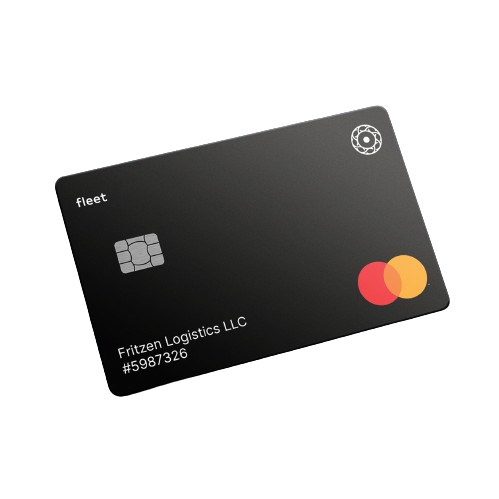What is Telematics?
Whether you’re an owner-operator or a fleet manager, you’ve likely heard of telematics. Industry leaders are saying that telematics is the future of the industry, but what exactly is telematics, and how does GPS fleet tracking work in the world of telematics?
The word telematics comes from the words telecommunications and informatics. Telematics combines communication technology (like GPS satellites and sensors) and informatics (like data management systems).
Telematics provides powerful, actionable insights into your fleet operations. Read on to learn more about fleet telematics and how you can incorporate it to help your business grow and thrive.
The History of Telematics
Like GPS, duct tape, and so many other modern technologies we use to increase our day-to-day quality of life and efficiency, telematics began as a military invention.
Global positioning system technology (commonly known as GPS) was developed by the US government at the height of the Cold War. During the same era, the invention of caller ID lit the flame of machine-to-machine (M2M) technology.
It didn’t take long for the wider, non-military applications of GPS to become obvious. By 1993, a rudimentary form of GPS technology was made available for civilians, including businesses like UPS.
Today, GPS, the Internet of Things (or IoT), and cloud and M2M systems combine to enable advanced telematics. This information is useful for a broad swath of the automotive industry, including insurance agencies, delivery and transit businesses, and ride-share or car services.
{{CTA}}
What Can Fleet Telematics Tell You?
You probably already use some form of telematics, like GPS navigation. But telematics is more than mapping.
In addition to GPS navigation, telematics technology includes sensors that extensively track vehicle and driver performance.
Telematics can provide an array of valuable information for owner-operators and fleet managers, like:
- The position of individual vehicles at any particular time
- The average and specific speed of your vehicle or fleet
- The average and specific idling time of your vehicle or fleet
- The distance and time of specific trips, or the average distance and time of your fleet’s trips
- Your drivers’ use of seatbelts
- Your drivers’ braking and driving habits
- The average and specific amounts of fuel used by your vehicle or fleet
- Individual vehicle diagnostics
- The battery voltage of individual vehicles
- Engine statistics of individual vehicles
These insights render a comprehensive picture of your operation. That picture will enable you to extend the life of your fleet, ensure your drivers’ safety, and maximize your operation’s efficiency.
How are Telematics Systems Used?
The possibilities that telematics open for owner-operators and fleet managers are far-reaching. Here are just a few examples of the ways that telematics can help you maintain and grow your business.
Strategically Deploy Drivers
Using real-time vehicle tracking, fleet managers can determine the most efficient vehicles to deploy for various tasks.
Let’s take, for example, a laundry pickup and delivery service. When a customer makes a new pickup request, the fleet manager can use telematics to determine which driver is closest to the requested pickup address. Deploying a nearby driver saves time and fuel and keeps drivers and customers satisfied.
Track Driver Safety Trends
With sensors that track speed, braking quality, and even seatbelt use, telematics enables you to ensure your drivers are operating their vehicles safely.
Establishing a fleet safety program is easy and straightforward with telematics. It empowers you to reward safe driving and address unsafe driving before it leads to fines or accidents.
Preventatively Maintain Vehicles
Save money and time with telematics software that tracks battery voltage, engine statistics, and potential problems with your vehicle or vehicles. Consider these scenarios:
- A notification on your phone alerts you that your fleet vehicle is due for an oil change.
- You see that several tires on one of your vehicles are ready to be replaced without even looking at the vehicle itself.
- Your telematics system tracks the battery life in each of your fleet’s vehicles, so your drivers never have to worry about running out of juice on the road.
Telematics enables preventative vehicle maintenance scheduling and informed decision-making so that you can solve problems before they even arise.
Put Vehicles Back On the Road Faster
When unexpected issues arise on the road, drivers using telematic alert systems receive immediate and actionable information.
This includes the amount of time the vehicle can continue to be driven before the problem must be addressed. Some systems even inform the driver of the closest mechanic who can quickly replace or repair the part.
When drivers have the information to quickly repair their vehicles and get back on the road, the entire fleet saves money.
Provide Better Customer Service
Companies and organizations like Amazon, UPS, FedEx, and USPS use GPS tracking technology like telematics to track packages and predict delivery times for customers. Even local food and grocery delivery apps use a telematics solution to let hungry customers know how long they’ll have to wait and where, exactly, their delicious delivery is.
Benefit From Usage-Based Insurance Programs
Usage Based Insurance (UBI) programs provide adjusted insurance rates depending on driver performance. Insurance companies use telematics to determine a driver’s performance and continuously offer better rates for better driving.
Insurance companies use the same telematics metrics as fleet managers to measure driver safety:
- Speed and acceleration
- Quality of braking
- Seatbelt habits
- Average time of day the vehicle is driven
- Whether or not a phone is used while the vehicle is driven
- How far and how often the vehicle is driven
UBI programs also often include information on best driving practices to ensure their best rates.
Efficiently Manage Payroll
In the past, fleet managers have used timesheets and job tickets to determine driver hours. This tedious, paperwork-heavy task was rife with potential complications: oversights, miscalculations, and misplaced paperwork.
Now, telematics can track exactly when the driver turned on and off the car, effectively “clocking in” and “clocking out” without any hassle or paperwork.
Have Confidence in Your Security
With built-in GPS trackers that connect directly to your centralized server, you’ll know where every vehicle in your fleet is at any time. This enables you to focus on the bigger picture of your operations and minimize theft.
{{CTA}}
Passive and Active Telematics
All vehicle telematics systems rely on data gathered by tracking systems and sensors, but they don’t all store that data the same way. Consider the differences between passive and active telematics:
- Passive telematics systems gather data and store it locally on the device in the vehicle. To access that data, the driver or fleet manager has to remove the telematics device from the vehicle and upload the data from it to a server.
- Active telematics systems utilize the cloud or M2M technology to communicate their data directly to a central server. This allows the fleet manager to track vehicle and driver performance in real time.
Passive telematics systems are generally more cost-effective in the short term. However, they incur more costs in the long term. Time spent manually uploading data could be spent more efficiently elsewhere.
Plus, time-sensitive data, like the exact location of a given vehicle, is only available with active telematics. This information allows you to provide top-notch customer service and have confidence in your fleet’s security. It’s a benefit of telematics you won’t want to miss.
The Future of Telematics
Currently, telematics systems, also known as “black box” technology, are devices that can be installed in your fleet vehicles.
As 5G, artificial intelligence (AI), and the IoT become increasingly evolved and interconnected, telematics systems will become standard-issue automotive features.
This advancing technology inevitably will lead to exciting new uses and challenges for telematics. Some of these might include:
- Self-driving vehicles – Telematics is an essential element of driverless vehicles. Because the automated technology is so new, it requires in-depth monitoring—exactly the kind of task telematics thrives at.
- Data overload – AI has the capability to filter the granular data telematics provides. This way, fleet managers won’t find themselves overwhelmed by irrelevant information. Instead, they’ll see the most important and actionable information available.
- Privacy concerns – Legislation, such as the Data Protection Act, is already in place to protect drivers’ and fleets’ data privacy. Drivers and fleet managers can rely on the data that telematics provides without fearing that their privacy will be compromised.
Telematics and AtoB: Fueling Your Fleet’s Efficiency
At AtoB, we’re excited about GPS fleet tracking because we know it has the potential to make drivers’ and fleet managers’ lives easier, more efficient, and more cost-effective. That’s our mission, too!
By combining the powers of telematics with your AtoB fuel card, you’re leveraging the best technology and the best services available for your vehicle or fleet.
Sources:
Verizon Connect. What is Telematics?
https://www.verizonconnect.com/resources/article/what-is-telematics/
Verisk. Looking at the evolution of telematics.
https://www.verisk.com/insurance/visualize/looking-at-the-evolution-of-telematics/
GeoTab. What is telematics?
https://www.geotab.com/blog/what-is-telematics/
Forbes. How Usage-Based Car Insurance Works.
https://www.forbes.com/advisor/car-insurance/usage-based-insurance/
Telematics. Active versus Passive Fleet Tracking Systems.
InsurtechDigital. The future of telematics in an automated world.
https://insurtechdigital.com/technology-and-ai/future-telematics-automated-world
Fleet Maintenance. The future of telematics is now.
USA Today. 15 Commercial Products Invented by the Military.
Get started with AtoB

Reviewed by
Vedant Khamesra is the driving force behind product management at AtoB. Specializing in strategic partnerships, SMB solutions, and new product development, Vedant seamlessly navigates P&L responsibilities while leading product execution and strategy. He is fueled by AtoB's mission to empower truckers and fleets with intelligent financial tools and services, making their lives easier and more rewarding.
Start saving today


%20(1).png)